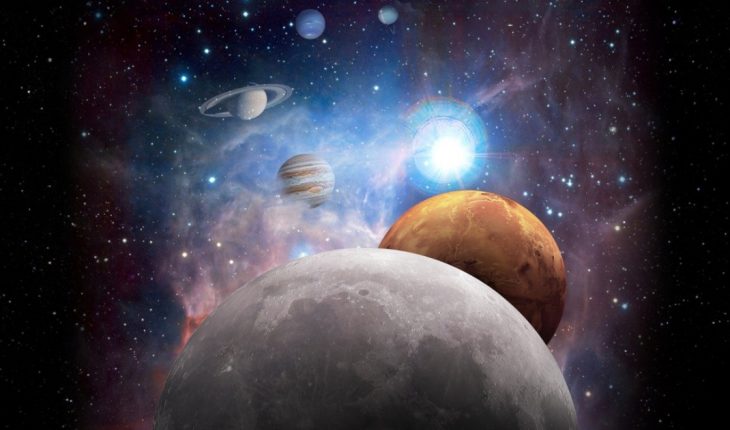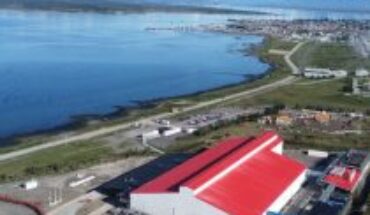2020 was, despite the pandemic, a dizzying year for space; and the next ones will be equal or even more exciting, with a lot of missions planned to go to the Moon, to Mars, or even beyond. But it can be difficult to keep up with everything humanity is sending into the sky, so on this note, some of NASA’s most important missions to mark on the calendar. The James Webb Space Telescope: Looking To the Past (2021)
Successor of hubble, the James Webb Space Telescope (JWST) will be the leading observatory of the next decade at the service of thousands of astronomers worldwide. Formerly known as the “Next Generation Space Telescope” (NGST); it was renamed after a former NASA administrator, James Webb, and is an international collaboration between NASA, ESA (European Space Agency) and the Canadian Space Agency (CSA). With a primary mirror of 6.5 meters, you will study every phase of the history of our Universe, from the first luminous flashes after the Big Bang to the formation of solar systems capable of sustaining life on planets like Earth, through the evolution of our own Solar System.It is designed to operate at very low temperatures (around -230oC) on near- and medium-infrared wavelengths and will allow you to study a wide variety of celestial objects , from planets in the Solar System to nearby stars, from neighboring galaxies to the farthest reaches of the distant Universe. On the other hand, the JWST is expected to operate for a minimum of five years—although planned for ten—and has a main mirror of seven times that of hubble (which will make it much more sensitive) that will combine excellent image quality, a large field of view, and a low level of backlight with a highly stable environment.
The launch, currently scheduled for 31 October 2021, will be aboard an Ariane V ECA rocket from the European spaceport of Kourou in French Guiana. For this you will have to overcome the great technical challenge of trying to pack your 6.5 meters in a rocket 5 meters in diameter, for which it was decided to launch it in a folded position “origami style” and deploy it once in space during the first three weeks of your trip. Finally, it will orbit 1.5 million km beyond the orbit of our planet—albeit following the rhythm of it as we orbit the Sun—offering a clearer view of the cosmos and preventing the spacecraft from entering and leaving Earth’s shadow (which would cause it to warm and cool down, distorting its view). Psyche: The Remains of the Core of a Planet (2022)
16 Psyche is a 210-kilometer-diameter body located in the asteroid belt between the planets Mars and Jupiter, unique because it appears to be the exposed nickel-iron nucleus of a primitive planet. In the depths of rocky planets such as Earth, scientists infer the presence of metal nuclei, but these are unattainable by all the upper layers that make them up. Because we cannot see or measure the Earth’s core directly, 16 Psyche offers a unique opportunity to the violent history of collisions and agrowth created by Earth’s planets (our solar system has four of its kind: Mercury, Venus, Earth, and Mars). In this sense, during a journey that will be 4 years to then remain in orbit for 21 months, the spacecraft also named Psyche, the size of a tennis court and launched aboard a SpaceX Falcon Heavy rocket, will seek not only to learn more about the mechanisms of formation of planets and nuclei, but also to help the development of mining technologies in space.
On the other hand, this mission led by Arizona State University and NASA’s Jet Propulsion Laboratory as responsible for mission management, operations and navigation; it is scheduled for August 2022.Se hopes that by the end of January 2026 Psyche will reach the asteroid and once there begin its thorough study from orbit with the help of a magnetometer, multispectral chamber, gamma-ray spectrometer and neutrons and a microwave instrument to study the gravitational field, as well as its internal structure.” This mission would be a time travel to one of the earliest periods of planetary increase, when the first bodies were not only differentiating, but were being pulverized, crushed and increased by collisions,” lead researcher Lindy Elkins-Tanton and her team explained in a conference in 2014.Artemis: The First Woman and the Next Man to the Moon (2024)
With the Artemis program, NASA plans to bring the first woman and the next man to the Moon by 2024, using innovative technologies to explore the lunar surface like never before. But the mission is much more than just getting humans back to our satellite and from the agency they are constantly looking to install a perfect base from which to establish a tracking program to travel to Mars.Also, for both destinations the goal is not simply to plant a flag and return to Earth, but to maintain a permanent presence for people to live and work.” We will return to the moon in search of scientific discoveries, economic benefits and inspiration for a new generation of explorers,” NASA Administrator Jim Bridenstine said on September 21 when the agency published its latest plans for the Artemis program. “As we build a sustainable presence, we are also generating momentum toward those first human steps on the red planet.”
An illustration of the upcoming Space Launch System, the rocket intended for use throughout the Artemis program.
But let’s start at the beginning: Artemis I. During this mission, the powerful Space Launch System (SLS) rocket will launch the Orion spacecraft into Earth orbit. The target? Evaluate SLS performance on your inaugural flight and collect engineering data. On the other hand, Orion’s high-speed ground re-entry is the top priority and necessary test of heat shield performance when it enters earth’s atmosphere, warming at nearly 2700oC—about half the temperature of the Sun’s surface—before falling into the Pacific Ocean for post-flight engineering recovery and evaluation. Also, over the course of four to six weeks, Orion will travel more than 1.4 million miles (or 2.2 million kilometers) before returning to Earth, surpassing the record for distance traveled from Apollo 13 Earth. This mission will also deploy 13 CubeSats—a kind of “miniature” satellites—to conduct scientific research and demonstrations of new technologies that will enhance our knowledge of the deep space environment, while involving a single lunar exploration mission to a broader and ever-widening set of universities, international partners, and private companies.
Illustration of NASA’s Orion crew capsule.
Then, with Artemis II, the first manned FLIGHT of SLS and Orion will send four astronauts to the lunar environment for the first time in more than 50 years. This mission aims, inter alia, to evaluate the performance of life support systems needed to generate breathable air and remove metabolically produced water vapour and carbon dioxide. At the same time, the crew of Artemis II will travel 7,400 km past the Moon to a point from which they can see earth and our natural satellite from the windows of Orion, with the Moon in the foreground and Earth in the background. Finally, Artemis III will be the culmination of this great project: Orion and his crew of four will once again travel to the Moon, this time to make history with the first woman and the next man to walk on its surface, with the Lunar Gateway Orbital Platform as a stopping point for human and robotic lunar missions.” Under the Artemis program, named after Apollo’s twin sister, the Goddess of the Moon, humanity will explore regions of the Moon never visited before, bringing people together around the unknown, the never seen and what was once impossible,” Bridenstine adds.
Lunar Gateway, or simply Gateway, is a proposed space station in lunar orbit intended to serve as a solar-powered communications center, science lab, short-term room module and waiting area for rovers and other robots.
Dragonfly: The Rise of Life (2026)
This highly anticipated mission to Saturn’s icy moon is scheduled for 2026 and is expected to reach its destination in 2034, when it will begin to study the wide variety of places in search of common prebiotic chemical processes in both Titan and Tierra.Es just its “like” with our planet, specifically its nitrogen-composite atmosphere—albeit with clouds , rain, seas and lakes of methane —which puts scientists looking for clues as to how life on Earth may have arisen.In turn, Titan might be similar to it in its origins. In its climate and surface there are organic, energetic and water-related phenomena that are very similar to those that could have generated life on Earth.From ethis background is that it was then decided that over a period of approximately three years, Dragonfly will explore various environments, from dunes to the bottom of a crater where there was possibly liquid water and organic molecules containing carbon, hydrogen, oxygen and nitrogen, key in the rise of life. Finally, Dragonfly will also investigate the properties of the atmosphere and surface, as well as underground liquid reserves. I mean, he’ll find out if there’s or at least life in Titan.” The New Frontiers program has transformed our understanding of the solar system, discovering the internal structure and composition of Jupiter’s turbulent atmosphere, discovering the icy secrets of Pluto’s landscape, revealing mysterious objects in the Kuiper Belt, and exploring a near-Earth asteroid for the building blocks of life,” said Lori Glaze, director of NASA’s Planetary Sciences Division. “Now we can add Titan to the list of enigmatic worlds NASA will explore.”





